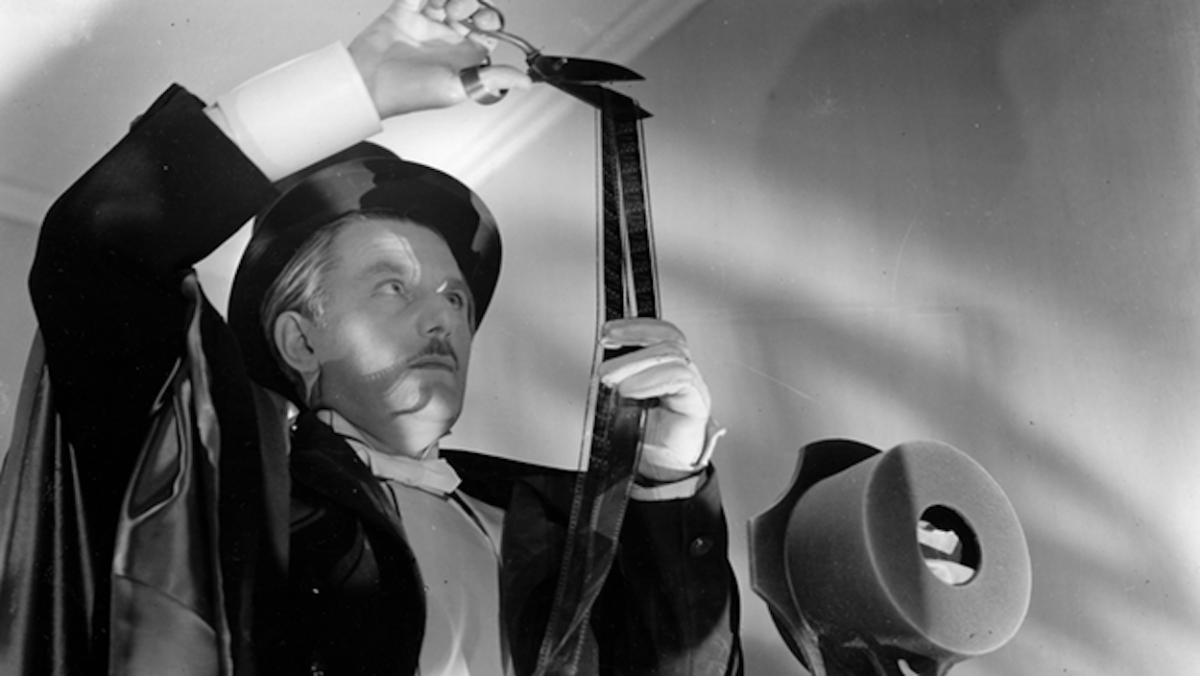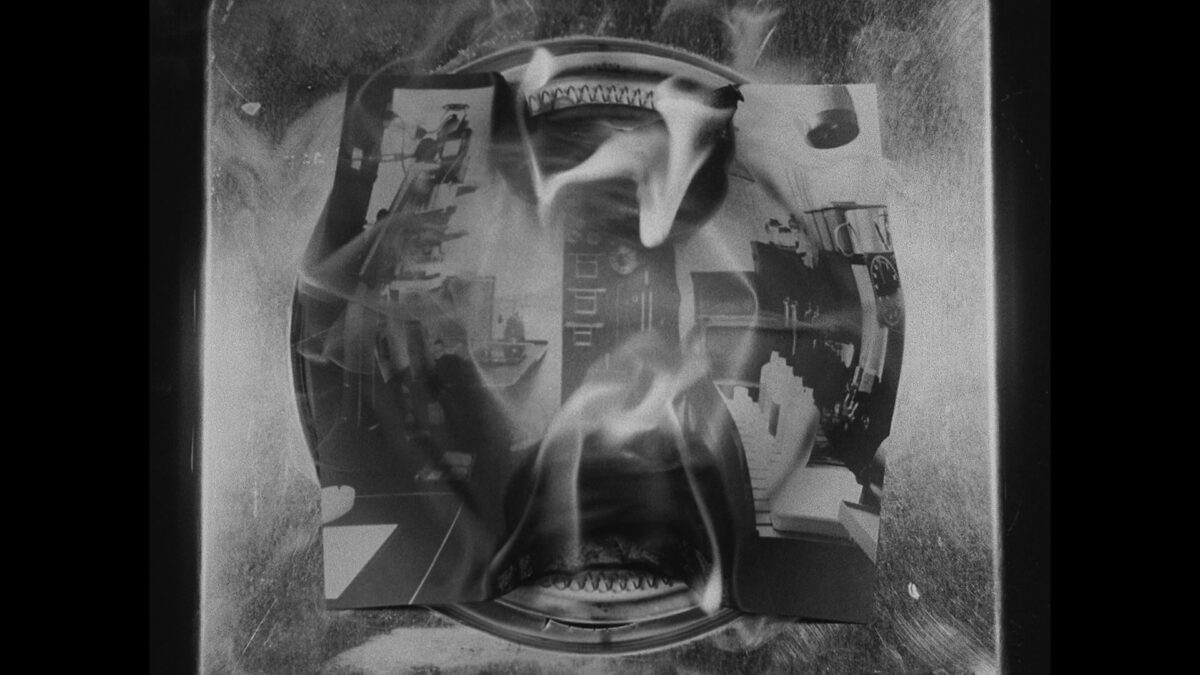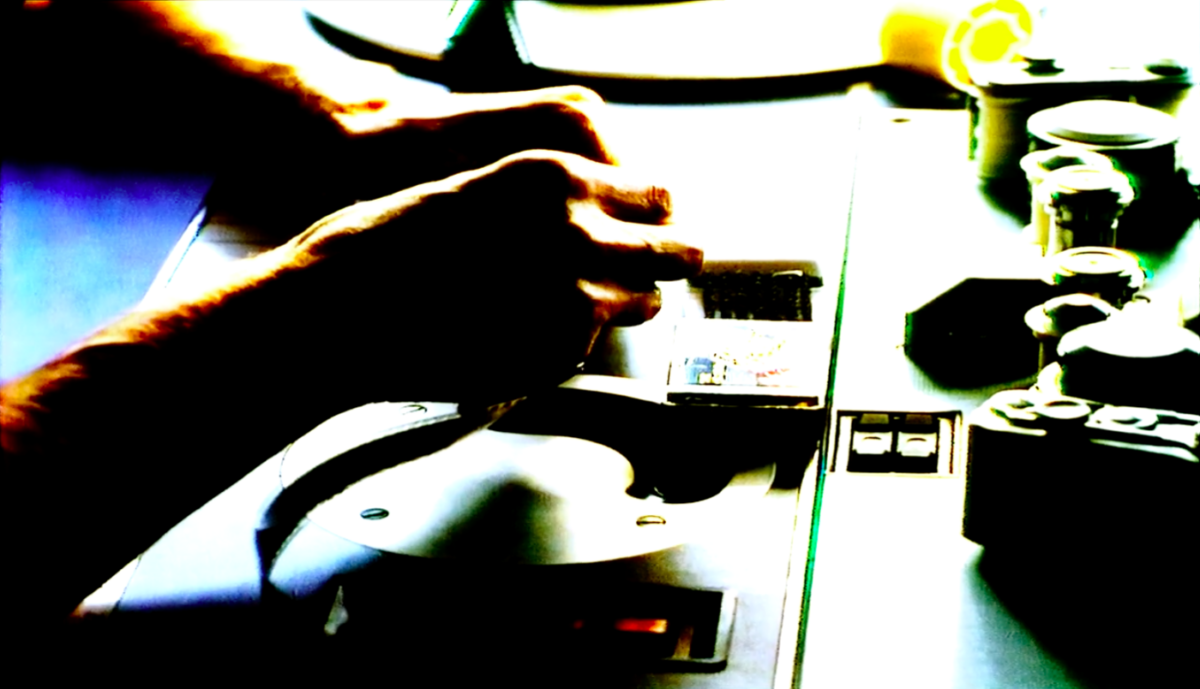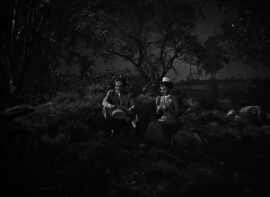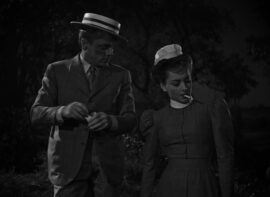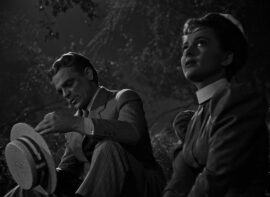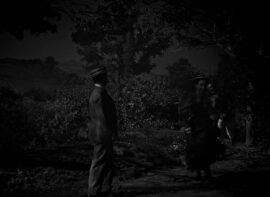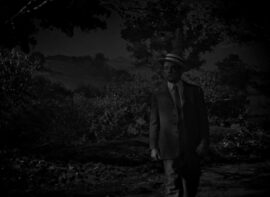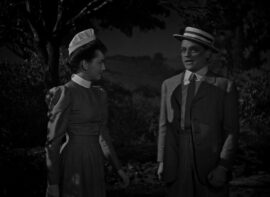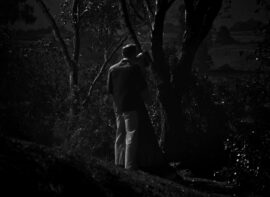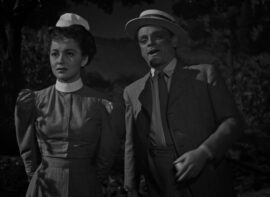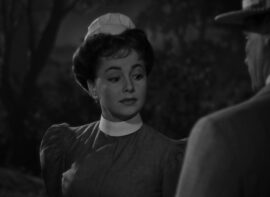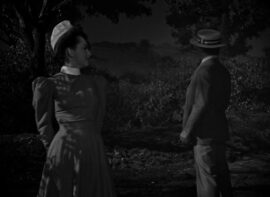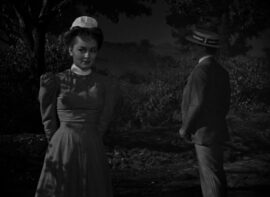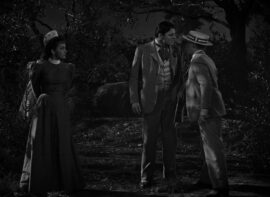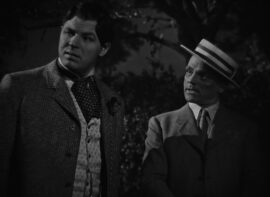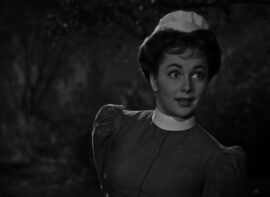The movement of celluloid film consists of a film strip passing 24 times per second through the camera. Due to the apparatus of intermittent motion, each frame is held under the pressure plate for 1/24th of a second to be exposed by the opening shutter, i.e., imprinted with a permanent record of that moment in time. This produces an image, which we refer to as a frame. In other words, a frame is mummified time materialized as a strip of celluloid. While each film frame represents a stretch of time, this fraction is so minuscule as to be imperceptible to human senses. What differentiates a film frame from a photograph is that the frame is not only exposed at the rate of 1/24th of a second but is also meant to be projected at that speed, as a constituent in a stream of continuous images, each of which represents the materialization of the same length of time. In the practice of cinema (production and reception alike), thus, a film frame in itself is of limited significance. Filmmakers think in terms of composition, properties of light, placement or movement of the camera, actors, or objects, etc., but not in terms of the individual frame. While shooting, the film frame has relevance in a very narrow capacity and only under exceptional circumstances. For instance, the Japanese experimental filmmaker Takashi Ito used the frame counter on his Bolex camera to reverse his film roll to an exact frame, which allowed him to precisely measure the length of the film he wanted to re-expose. Even in such cases, however, “frame” is used as a unit of measurement, considered a totality, with specific frames coming into the equation merely as the start and end limits. Nor does the individual frame normally find definition when viewing a film since the stream of frames passes before our eyes like a stream of water: just as we can’t point to a single drop of water, we can’t single out an individual frame. “What if we pause the film?” you might ask. We can do that, but then again, we can also fill a glassful of water from a stream, and we’ll end up with a glass of water, not a river contained in a glass.
Similarly, if we extract one frame from a film, it will immediately lose its “frameness,” as it will be divorced from the spirit in which it was created and meant to be screened: as part of a series that creates the impression of movement. Once stopped, frames become divested of this essence and cease to be frames altogether, metamorphosing into images. This is the paradox of the art of the “moving image.”
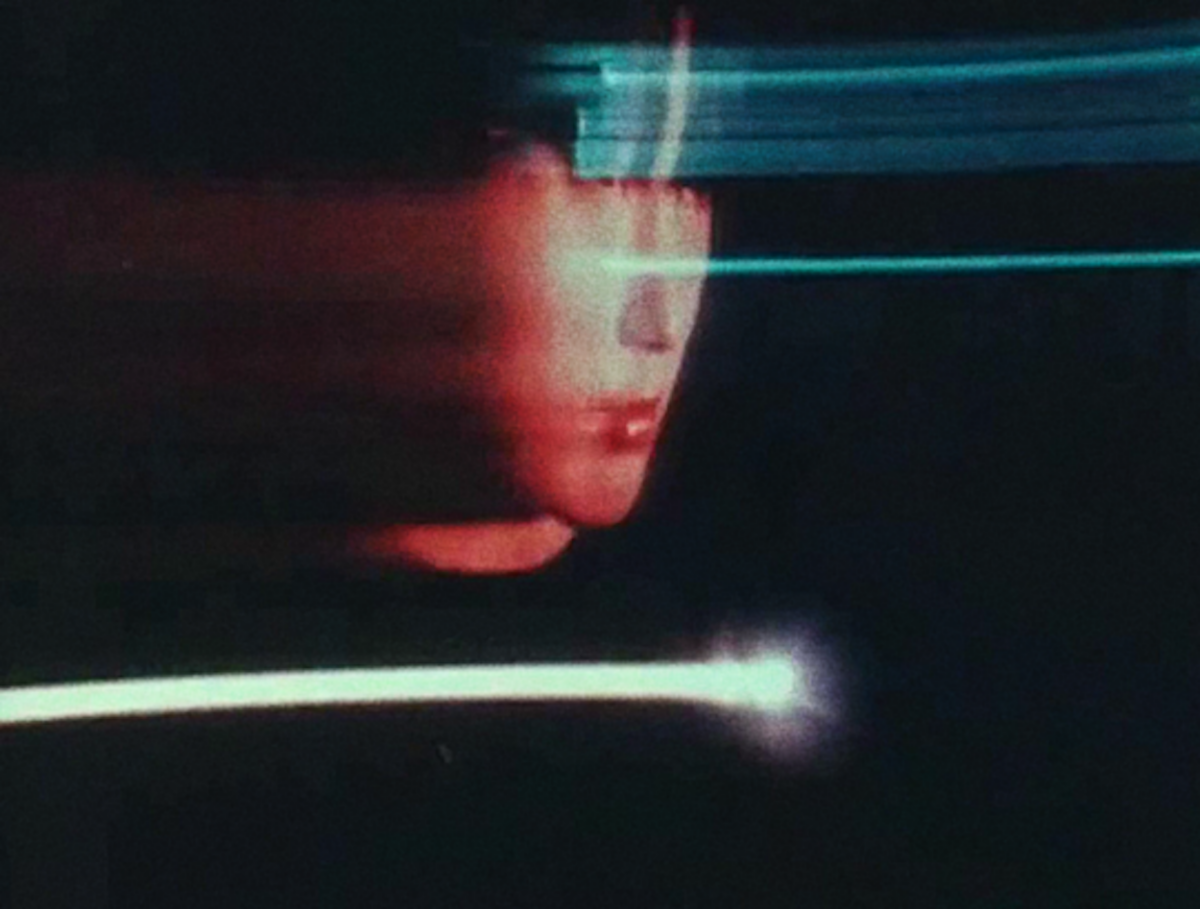
Dialectics of Movement
From an empirical perspective, frames appear unchanged throughout the production and presentation of films. But while empirical reasoning is helpful in the classification and categorization of phenomena in isolation and stillness, it’s insufficient for the analysis of things in motion. Dialectical logic, on the other hand, allows us to examine phenomena during their actual development, revealing how the same form can be imbued with different content as it moves through a certain process, being transformed into its opposite when developed far enough in a particular direction, or undergoing a qualitative shift after reaching a specific “critical limit” of accrued quantitative alterations. These principles, themselves derived from examinations of natural and historical processes and theorized by the likes of Hegel and Karl Marx, are methods through which dialectical thinking aids us in a well-rounded analysis of things in the course of their contradictory development, and, crucially, in their interrelation with other phenomena, as opposed to a stale laboratory state of isolation. What relation do frames have to one another, at what speed are they moving, at which stage of production/exhibition are they being studied, in what era of film history is the consideration being made, etc.? Depending on the mode and object of analysis, all of these considerations could be of decisive consequence.
Where Does Your Hidden Movement Lie?
Frames gain significance as individual frames for the first time only once they go under the editor’s knife. The first and last frames recorded each time the camera operator starts and stops recording act as thresholds between different shots. However, since multiple shots are often recorded on the same roll of film, with no automatic separation between them (as opposed to digital cameras that create new files each time the recording is stopped), they have to be actively sought out by the editor, so that the various shots can be identified and physically separated. For this to happen, the editor must be able to clearly distinguish and identify individual frames, which entails slowing down the frames to a near standstill. In other words, it requires careful control over individual frames.
In post-production, for the first time, the filmmaker is incentivized to slow down the frames and look at them individually at speeds perceptible to human vision. In other words, at speeds that don’t deceive the human eye through the phenomena of the persistence of vision. The first criterion for perceiving the content of each, then, is to do away with the raison d’être of continuous frames: the illusion of movement. But as previously explained, frames lose their essence once stopped or slowed down sufficiently. But this is only temporary. They will soon be set in motion again, regaining their function as frames once the decision of where to cut is made. While making this choice, the editor will repeatedly play the relevant portion to see the result. He needs to advance the film frame by frame to cut, but once the cut is made, he reverts to normal playback speed to test this hypothesis in action. Not only are the editor’s methods of manipulation and confirmation different, but the frames themselves are transformed during this back-and-forth process as the work continues.
While in normal 24 fps motion, the content of frames is not in the individual images they carry (as established, we cannot see the individual images) but in the impression they collectively impart as a consequence of their continued movement. In other words, their content is their very movement. The totality of the frames is the form through which this content is outwardly expressed. Once stopped; however, a sudden qualitative shift occurs: now the individual image becomes the content contained within the form of a still frame.
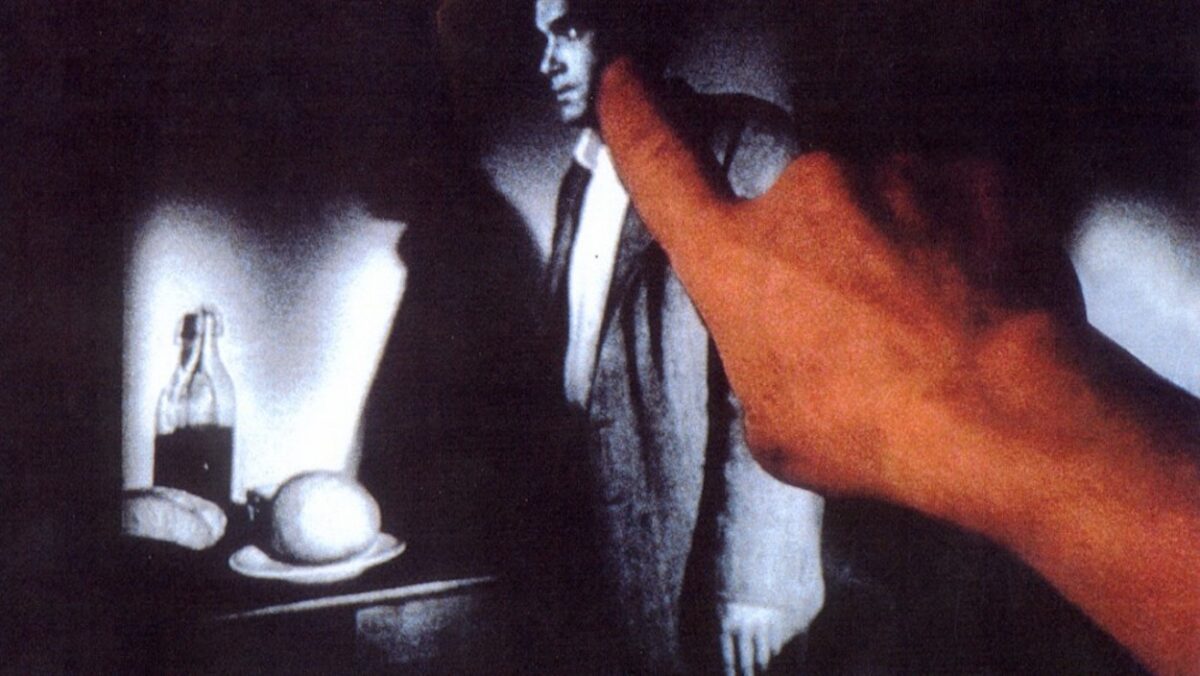
The Illusion of Stillness
Though cinema is usually an art predicated on the illusion of movement, in the case of freeze frames, it becomes dependent on the illusion of stillness. As far as the projection machinery is concerned, there is nothing special about freeze frames: they are also frames that pass through the projector, being stopped between the shutter and lens, while the shutter opens for each 1/24 of a second for each frame’s image to be projected onto the screen. It takes 1/24 of a second for the next frame to be projected in the same manner; thus, the pattern of film projection is one of image→black→image, etc. The question of what those individual frames are, whether they are all the same or different, doesn’t concern the technical apparatus. The freeze frame is not a slide, or a single frame projected for a certain number of seconds. That’s the intended illusion. The frames just happen to all be exact reproductions. Here, the previous assertions about the movement of frames turn into their opposite. If it’s impossible to point out a single frame while viewing a film at normal speed with a freeze-frame shot, it becomes inevitable. While in non-freeze frame shots, frames had no significance as individual frames and functioned only as a measure of the length of the film strip, now they are endowed with importance as individual frames.
If a series of frames differs from a still image both quantitatively and qualitatively under normal circumstances, in the special case of freeze-frames, the difference is only a quantitative one. In other words, a freeze-frame is any still image reproduced enough times and passed through the projector to create the illusion of stillness. Any single image is still. If we make reproductions of that image and move those through a projector at 1 fps, we will see the same image moving like a slideshow, with half a second of black screen between each reproduction. We witness not the illusion of continuous movement but images being moved through a projector. Since the speed of this movement is below a certain threshold, we notice the mechanics of movement. If more frame reproductions are added to our experiment, the ratio of the still reproductions and the black screen (1:1 at the start) will be continuously altered in favor of the former. Once the threshold of around 15 reproductions per second is reached, quantity turns into quality: the black screen will appear to have disappeared entirely, and the image ceases its visible movement. Having moved beyond a specific critical limit, we now seem to be back to the single original frame.
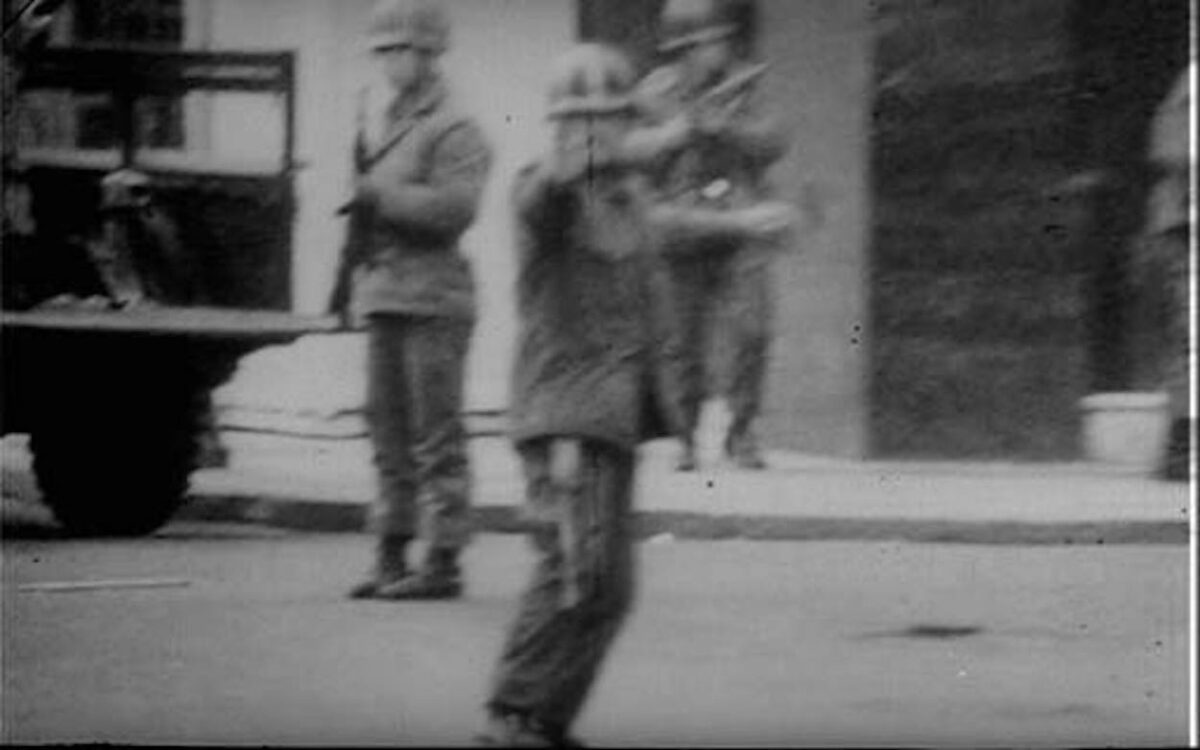
The Film Carcass
Taking frames out of a film in order to study them kills them as frames. Yet this doesn’t mean the resulting image is not worth studying. After all, we owe much of the advances of science to studies of organisms after they’ve ceased to be alive. While this might not show us how a creature lives and moves in all its vitality and motion, it nevertheless allows us to study the organism’s internal organs, nervous system, and cells. The same applies to the study of film. A single frame, isolated from the rest of the pack and hunted down with the press of the screenshot key, stops moving at once and loses its life force in doing so. In the form of its carcass, the film frame becomes a generalized representation of a specific composition, a particular arrangement of elements, lights, etc., within the shot at large. Like all generalizations, this can be useful and valid in the study of films, but within certain limits and so long as it’s not forgotten that this isolated image is not the object of study itself, but a test sample put under the microscope, which could give us an indication of the overall organism if approached in the appropriate spirit. It would be easy to get caught up analyzing a frame, as a single image, and draw exaggerated or misplaced conclusions. Hypotheses drawn from an isolated frame should be constantly checked against the reality of that frame in motion: how long is the composition represented in the individual frame held on screen? What comes before and after it? To what extent does the camera reframe? What’s the level of emphasis placed on the composition through various sound elements and the placement of the frame in the overall structure and story of the film? Without constantly referring to these criteria, the analysis of the single frame becomes that of a single image, increasingly losing its connection to the original context. Even if it has become secluded and still, it’s only by considering the image simultaneously in its movement and stillness that we can have any hope for its resurrection as a frame.
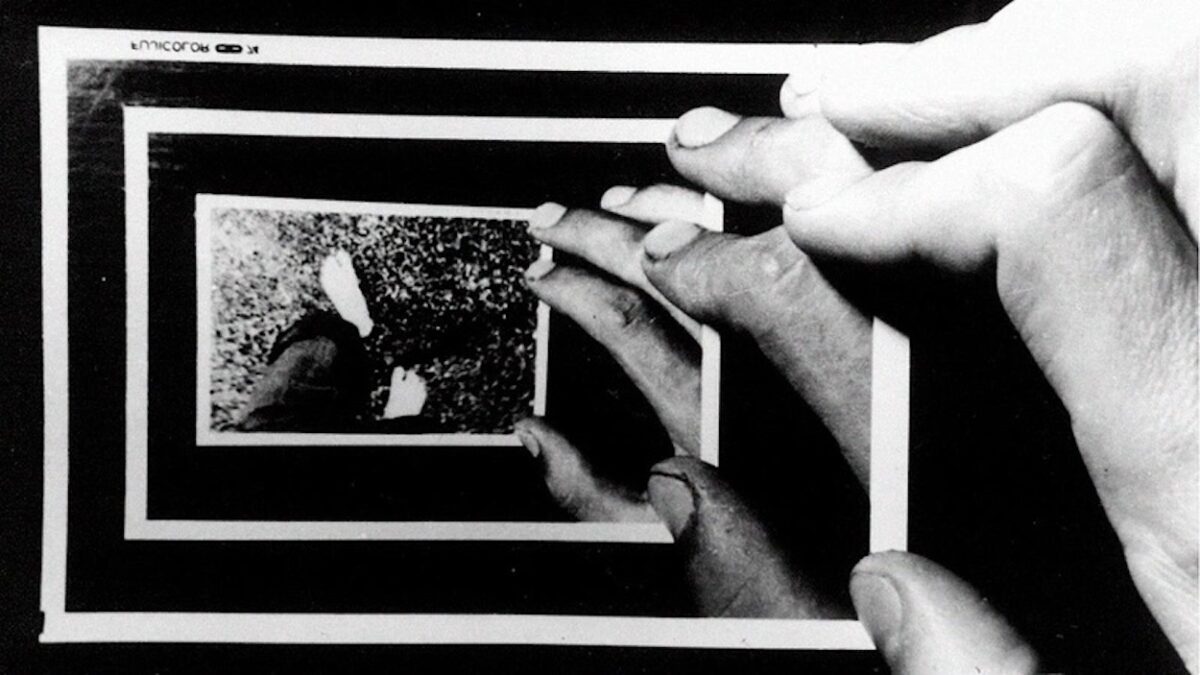
“Air! You can’t even see it, so why talk about it?”
James Cagney’s Biff Grimes and Olivia de Havilland’s Amy Lind, who will end up married by the end of The Strawberry Blonde (Raoul Walsh, 1941), have their first meeting under the moonlight in a park on the outskirts of New York.
The scene begins with the actors centered in the frame in a serenely composed shot. Surrounded by nature and illuminated by moonlight, their searching eyes avoid one another. The camera slowly moves in, as if to not disturb the moment, before cutting to a more intimate angle from the side.
Biff is playing with his hat to occupy his hands while Amy glares at the sky. There’s a cut to the reverse shot as Amy finally breaks the silence: “There’s something about the country air!”
So, do we have a good sense of what this scene is about based on the above frame reproductions and description? Is it a romantic rendezvous? Are the characters enamored with one another? Leaving the example at this point would seem to give such an impression. But to get an accurate sense of how Biff and Amy’s relationship begins and how it develops in its initial stages, we need a far more extensive series of representative frames from the scene. After failing to engage Biff in conversation about the country air, Amy asks him for a cigarette. They’re both standing now, framed centrally in a medium two-shot. Biff obliges before suddenly realizing it’s against good etiquette for a decent woman to smoke: “They can say a lot of things about Bill Grimes. But not that he ever gave a cigarette to a girl!”
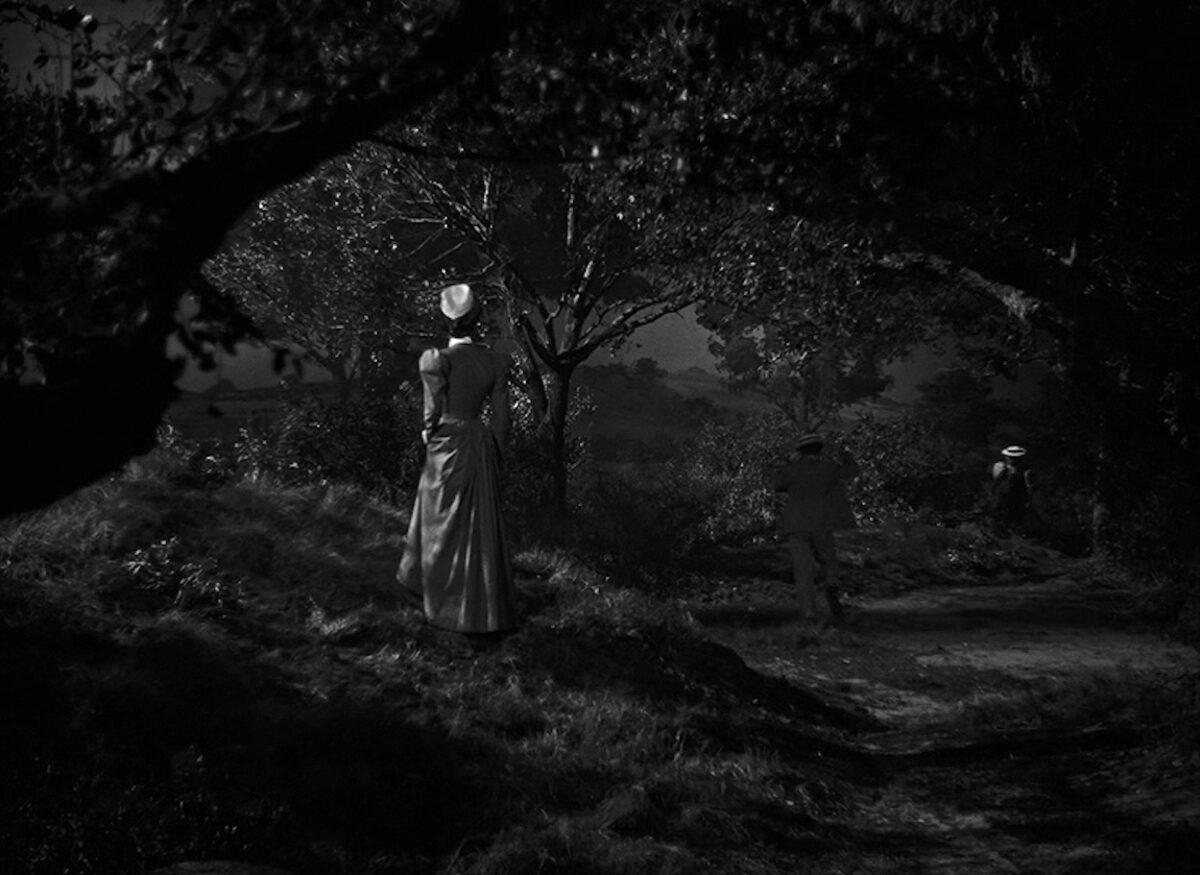
He retrieves the offering before hearing a woman’s offscreen voice: “Stop! Stop it!” The gentleman that he is, Bill, runs to the rescue. Cut to a long shot, with intricate lighting, depth of field staging, and meticulous composition worthy of Mizoguchi. A silhouetted tree branch in the foreground gives the composition an accentuated feeling of depth. Stranded in the middle of the frame, Amy is highlighted by the studio moonlight and elevated by the elevated grass set. Biff stands out through his quick movement toward the background. A white hat emerges from behind a strategically illuminated bush in the back of the shot as Bill runs.
A pair of lovers run out and go past a disappointed Bill in a new camera setup, which leaves him alone in the frame. Amy joins in to form another two-shot, reminiscent of the one before their conversation was disrupted.
This time, he is on the right of the frame, and she is on the left. “I thought it was Virginia,” says Bill, embarrassed. “However, it was a good thought,” Amy responds gleefully. They’re still not looking at each other but at the offscreen couple. A POV shot shows them kissing.
Based on this evidence, Bill hypothesizes that they must be engaged. The forward-thinking Amy doesn’t consider Bill’s interpretation necessarily correct: “Just because she let him kiss her?” He reluctantly concedes: “I guess a little kiss is harmless if it’s all in fun.” Walsh cuts to a medium close-up of Amy, who leans forward slightly and checks her interlocutor head to toe before rejecting his too-timid premise again: “Even if it isn’t in fun!”
Cut to the reverse angle reveals Bill’s distraught reaction: “You mean?” Back to Amy: “Exactly.” The scene develops along this line for a few more witty exchanges (which include Amy dismissing the institution of marriage as outmoded) before a terrified Bill retreats into a medium-long two-shot and hollers for his friend Hugo (who’s in the bushes with the aforementioned Virginia) to come to his rescue.
Too ghastly to be uttered out loud, he murmurs what Amy hinted at into his pal’s ear. A medium two-shot of both friends looking at Amy offscreen. Cut to the same single of Amy as before. She leans in even more this time and puts it to them emphatically once and for all: “Exactly!”
Walsh conceives this scene as a series of intricate movements that subtly reflect or react to the developing dynamics between the two characters. His mise-en-scène adjusts as quickly as his characters talk without ever calling attention to itself. The transient nature of each composition means no single frame can illuminate the situation or dynamics as a whole at any given point, and an overemphasis on individual frames, divorced from the logic of the scene at large, is sure to bring more harm than good to our understanding. Conventional associations of familiar compositions are constantly undermined as the scene unfolds (the opening framing sets up a sweet romantic sequence before undermining it with comedic miscommunication), traditional gender roles/behaviors are reversed (Bill, who gallantly runs to help a woman he thinks needs saving, ends up yelling for help from the woman he’s with), and humor develops out of rhythms of cutting, and repetition of compositions, gestures, and phrases (Amy’s final “exactly” is uttered without question having yet been asked of her).
As Tag Gallagher once wrote, “Frame enlargements can show a lot of Ford’s art — composition, camera angles rhyming from one shot to the next, lighting — but almost nothing of Rossellini’s art, because Rossellini turns everything into motion. All the feelings, the motivations, the characters’ sense of self, even morality and philosophy are turned into motion.” If Mizoguchi was evoked before, it was a calculatedly mischievous evocation, as an example from the diametric opposite side of the spectrum of approaches to mise-en-scène: a filmmaker whose single frames do reveal a lot about a scene, character, or a situation as a whole. But even the most “composed” shot of Walsh’s film (Biff running after hearing the woman’s scream), which I attempted to put some emphasis on, lasts just 4.5 seconds and functions as a transition between two parts of the scene. Subjecting a frame from that shot to an in-depth analysis of the placement of actors (both vertically and horizontally), the directions of their looks, their contrasting treatments by lights, etc., without attention to the transitional and transitory nature of the shot, can run the risk of endowing it with implications not intended by Walsh, or stressing possibilities, that, while perhaps present as potentials, were not activated or emphasized by the filmmaker. While discussing the direction of actors, Victor Perkins reminds us that working with performers is often “a matter of emphasis, not transformation,” emphasizing particular aspects of the multifaceted personality of each performer over others (Film as Film, 183).
Similarly, the sum of potentials in a given frame consistently exceeds that of the realized potentials or the points of emphasis by the filmmaker. Perkins sees the director’s job as that of a critical viewer on set, who will deduce what to emphasize (at the expense of other elements) at a given movement: “The director must decide on behalf of the audience what needs to be seen and how we should see it (Film as Film, 179). Inverting this assertion, we should expect the alert viewer to reciprocate by considering the spirit in which a film was organized. That is, not by external criteria imposed on the film or by an abstract set of eternal codes of judgment, but by identifying the internal logic of organization of a given film and assessing how successfully the different elements were unified in their developing set of interrelations. Thus, while analyzing a frame like the one reproduced below from Mizoguchi’s The Story of the Last Chrysanthemum can be instructive on its own, a study of the deep space mise en scene from The Strawberry Blonde would amount less to a clever reading of the film and more to a misrepresentation of Walsh’s art. That is, a misplacement of emphasis when the patterns of the organization of the film as a whole are taken into account.
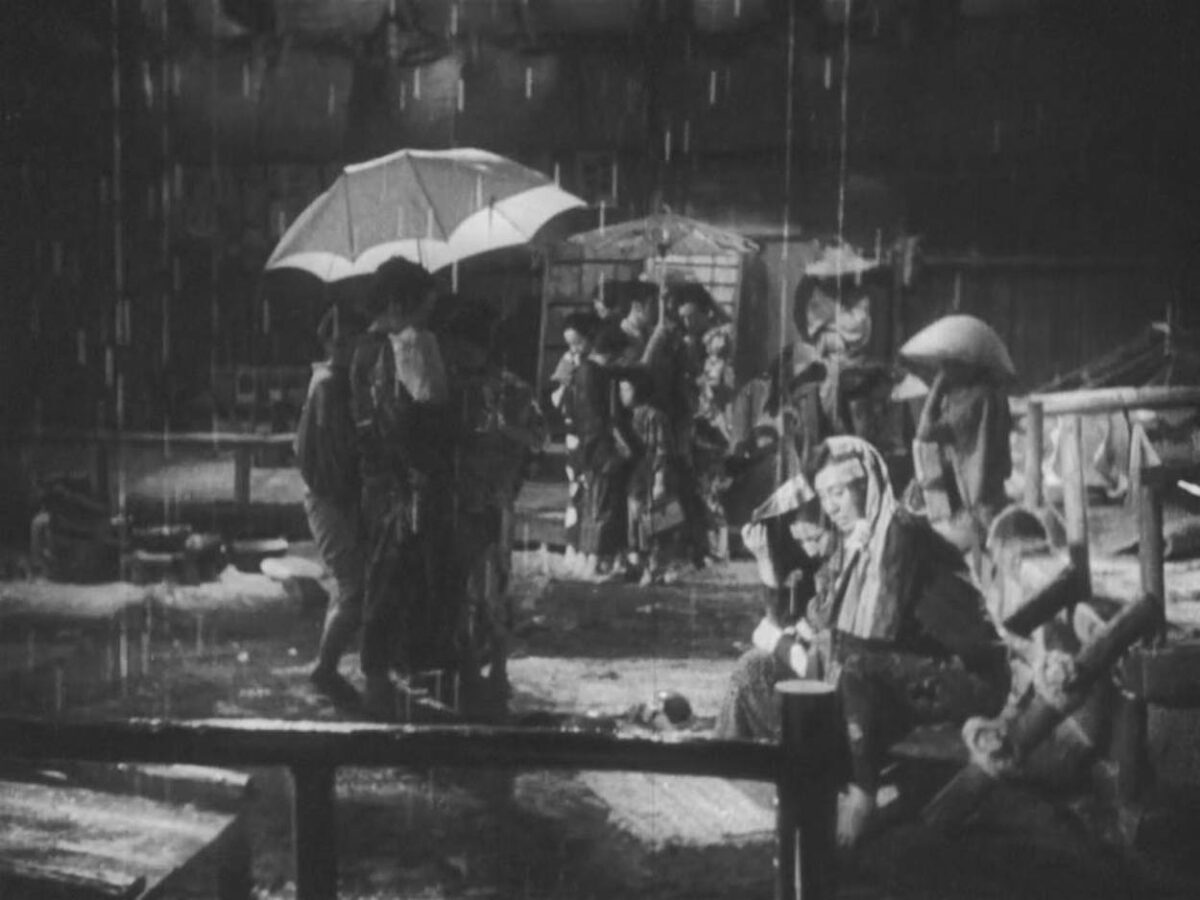
Dialectics is the mode of thought concerned not with being but with becoming. It doesn’t dismiss outward appearances, but neither does it stop there. Not satisfied with what is, it digs beneath the outer shell to study subterranean processes that have not yet surfaced. If empirical reasoning, in the name of scientific objectivity and adherence to facts, chains itself tightly to what is, dialectics shows us that nothing merely is. Rather, everything is in a constant state of flux, movement, and change. Certain phenomena gain the appearance of immutability due to the prolonged nature of the transformations they go through. In addition, our commonsense aids us in ignoring processes that don’t immediately affect us in favor of focusing on what is directly at hand. While this is essential for carrying out many day-to-day tasks, it can be rather limiting in critical analysis.
Considered empirically, a frame is always a frame: a representative object, no matter at what point in the production process. But dialectically, a frame is bound with movement and plurality, meaning and significance. On the surface, carefully composed deep-focus compositions by Walsh and Mizoguchi may appear quite similar when studied as screenshotted images in isolation. But as frames, in their movement and interrelations with other elements, they have wholly different functions in producing meaning and significance. The dialectical transformation operates not only from film to film but also within the very same role of film. While empirically staying the same solid object, the frame undergoes a series of changes as it moves along the production process. The same form is imbued with different content at each stage due to new relationships formed with other phenomena and changing properties such as velocity of travel. Beyond certain limits, the accumulation of quantity of such changes can lead to a transformation in the quality. A frame can stop being a frame and later regain its quality as a frame. The essence and appearance can decouple and remerge; a frame can be a frame on the surface and an image in essence. This is the paradox of moving images: a contradiction that only reproduces itself upon resolution.
